The VAR Review: Why Rashford was onside, but Jesus and Toney offside
Rashford #Rashford

Video Assistant Referee causes controversy every week in the Premier League, but how are decisions made, and are they correct?
When there’s a major incident, we examine and explain the process both in terms of VAR protocol and the Laws of the Game.
– How VAR decisions affected every Prem club in 2022-23- VAR’s wildest moments: Alisson’s two red cards in one game- VAR in the Premier League: Ultimate guide
Possible offside: Rashford goal
What happened: Manchester United went 2-0 up when Anthony Martial played Marcus Rashford through on goal, and the England international slotted the ball past Alisson. There was a question of Rashford being ahead of the last defender, Joe Gomez, when the ball was played.
VAR decision: Goal stands.
VAR review: It was the weekend of close offside calls, including two goals that were disallowed by the narrowest of margins. And in Rashford’s case, the goal stood only because of a change instituted a year ago in the way VAR offside is ruled.

4dDale Johnson

11dDale Johnson

19dDale Johnson
2 Related
The current VAR offside system has several flaws, mostly around the exact time the ball is played and the manual plotting of points on the body of the attacker and defender. Ahead of Euro 2020, UEFA proposed a new system to give the “benefit of the doubt” back to the attacker. If the two lines touch, it’s too close to call and the attacker should be given onside.
The aim was to remove the most marginal, so-called “toenail” offside calls. One such example was Jordan Henderson’s injury-time winner for Liverpool at Everton two years ago, with Sadio Mane called offside in the build-up. It’s exactly the kind of situation, with no gap between the lines, that led to the “benefit of the doubt” rule.
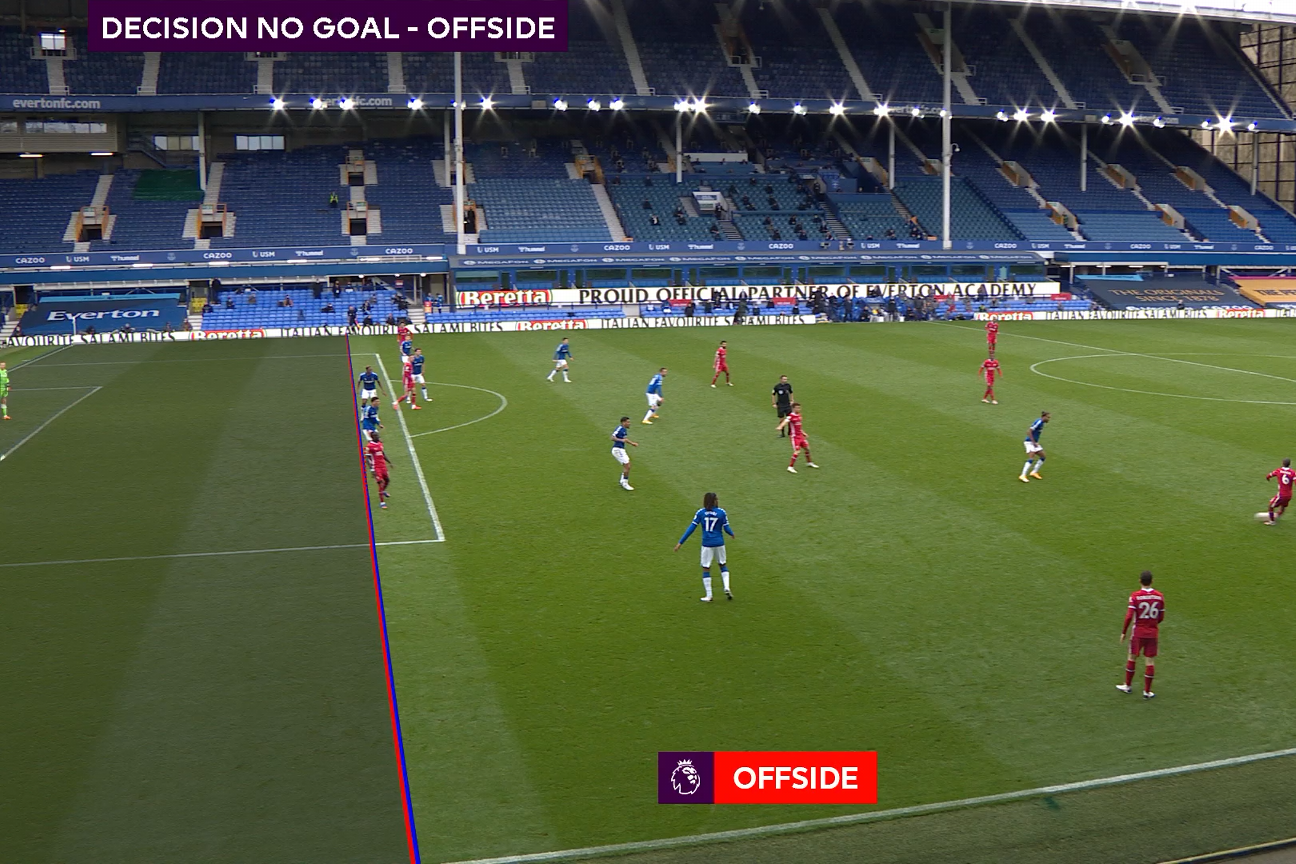
It gives tolerance level, or margin of error, of 5cm back to the attacking player, meaning they can be just in front of the defender but the goal will stand due to the possible inaccuracies in the system.
Usually the offside image shows both lines to attacker and defender, but when a player is onside due to the tolerance level, the computer automatically only displays the line to the defender — which in the Premier League is green to make it clearer that a goal is good. The line isn’t displayed to both players (in any league) because they would sit on top of each other.
Rashford was marginally offside, but onside due to this “benefit of the doubt.”
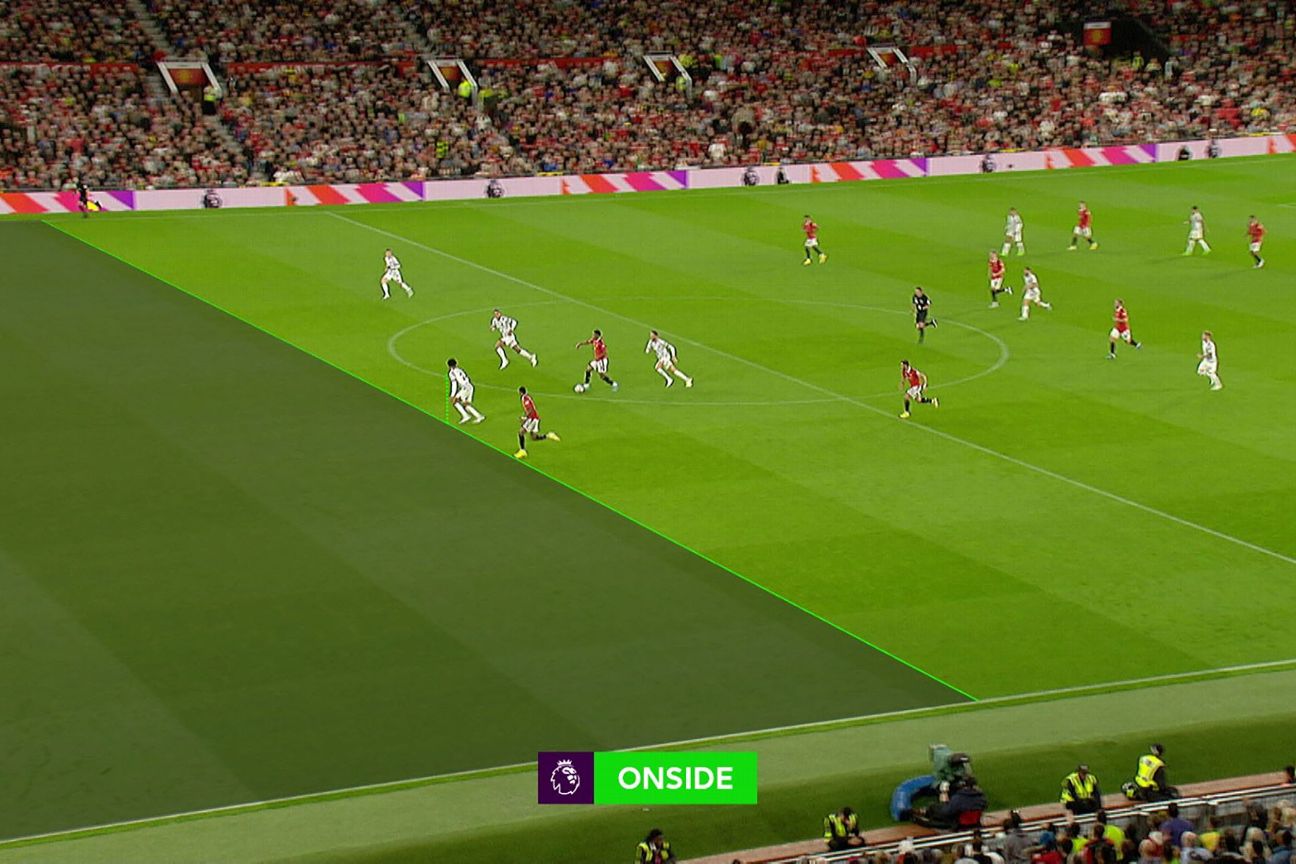
There are still problems with the visualisation of the offside calls, due to how the human eye perceives a 3D situation on a 2D image. Depending on the camera angle, it may appear one player is ahead of another but the technology says otherwise. It means the fans often don’t trust the result. Which is why semi-automated offside technology (SAOT) arrives this year, first in the Champions League and then in the World Cup.
– Will semi-automated offside be the big VAR fix many hoped for?
While Man United were the beneficiaries on Monday night, they have also conceded goals in recent games because of this rule.
On the opening day of the season, Danny Welbeck was marginally ahead of Harry Maguire before setting up Pascal Gross for Brighton & Hove Albion’s opening goal in their 2-1 win.
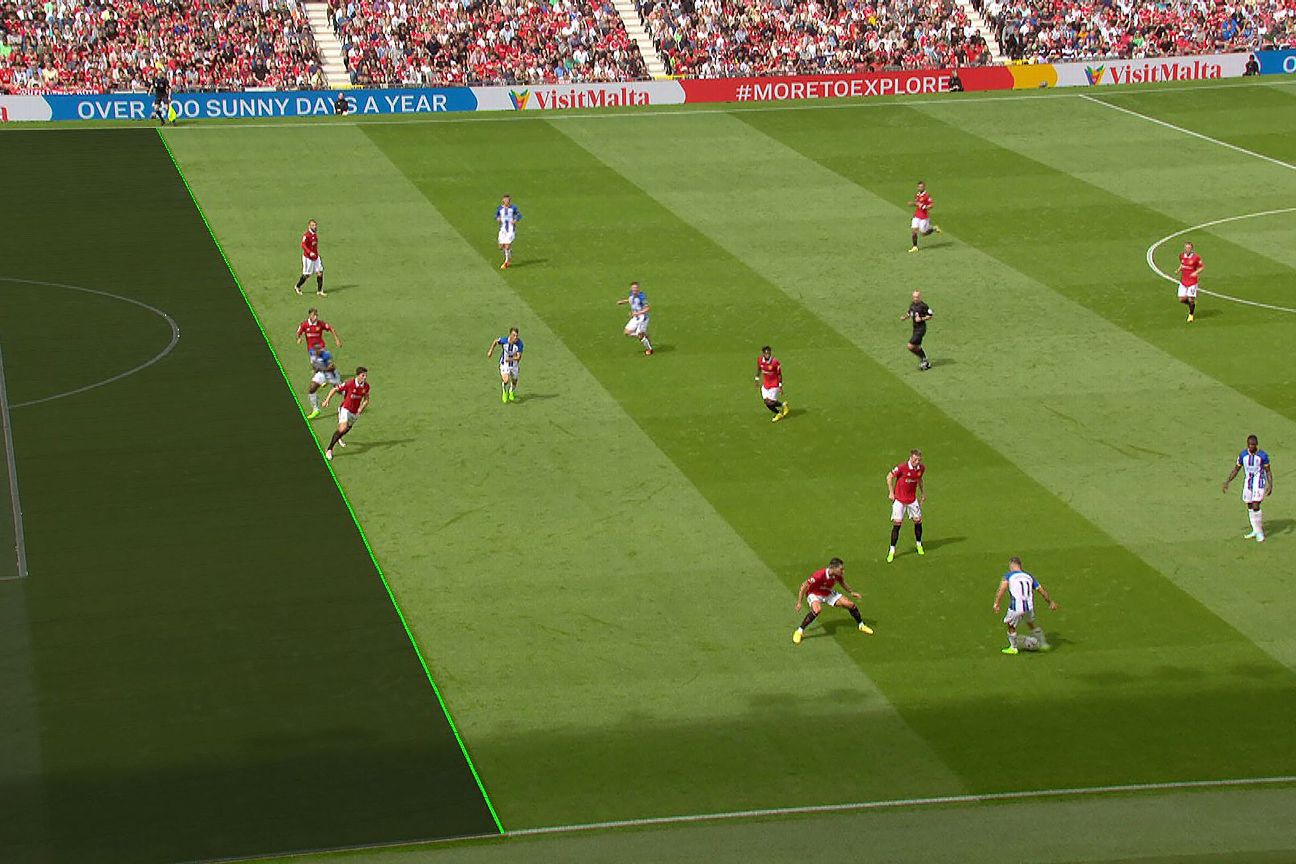
And toward the end of last season, Teemu Pukki equalised for Norwich City at Old Trafford.
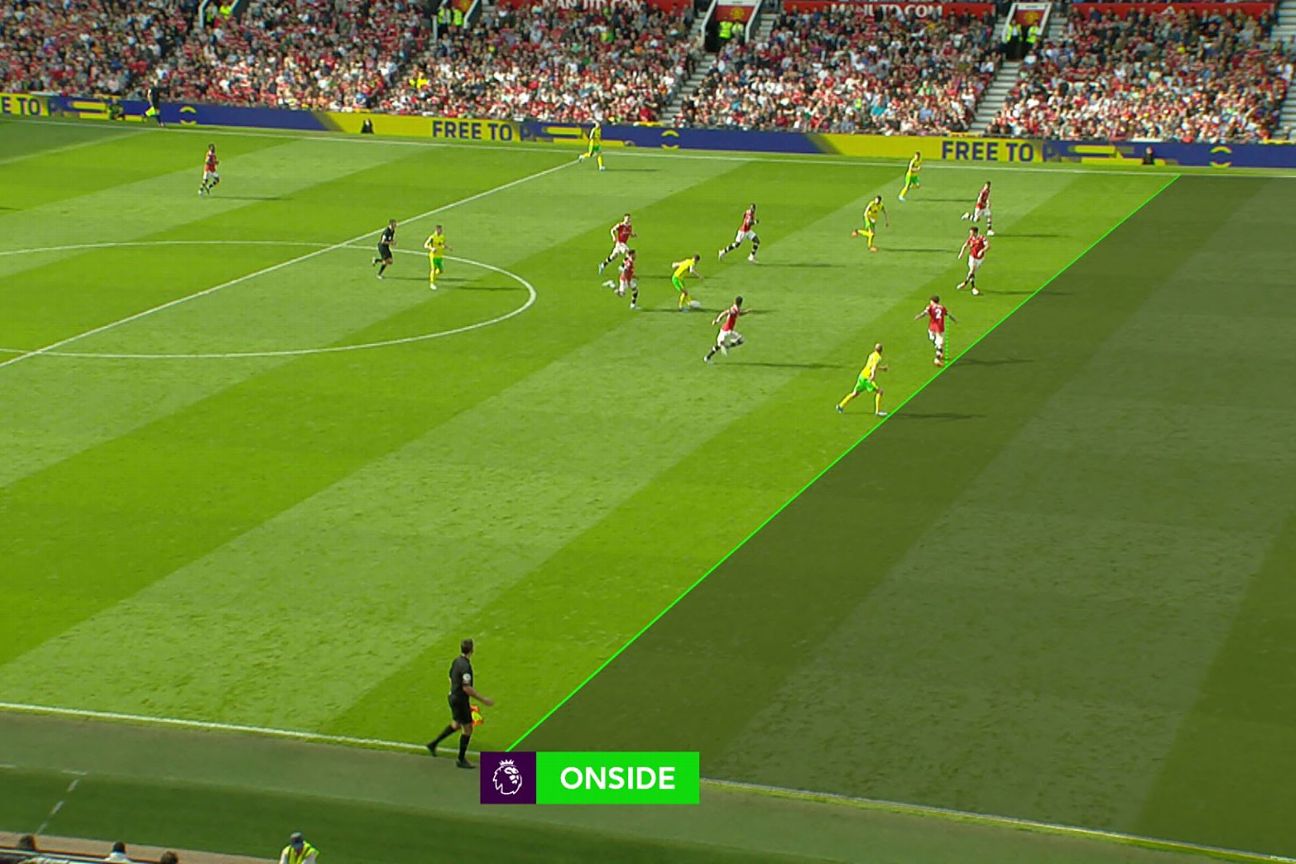
How does this differ from other offside decisions this weekend? The simple answer is that every offside image is unique. There’s no argument to say that if Rashford is onside against Liverpool, then Gabriel Jesus’ goal for Arsenal against AFC Bournemouth should have stood. It’s based solely on the relative positions of two players in an individual situation.
Even with the 5cm tolerance level, there will still be offside situations that fall right on the border. There will always be a point at which onside has to become offside. It’s inescapable. And the Jesus goal is one of the tightest we’ve seen. Pixelated images on social media can sometimes give the impression that the lines are overlapping, but the high-definition graphics used by the VAR are much clearer.
In the Jesus offside image, his shoulder is in front of foot of the Bournemouth defender, and as the lines don’t touch it’s not within the tolerance level. Offside has to be given. If we say this Jesus goal should be onside, it just creates a new border at, for example, 6cm. Then there will be other goals which are 7cm offside and produce a similar image. And so on, and so on.

Ivan Toney’s goal for Brentford at Fulham was also just outside the tolerance level — but it wasn’t quite as tight as the Jesus offside.
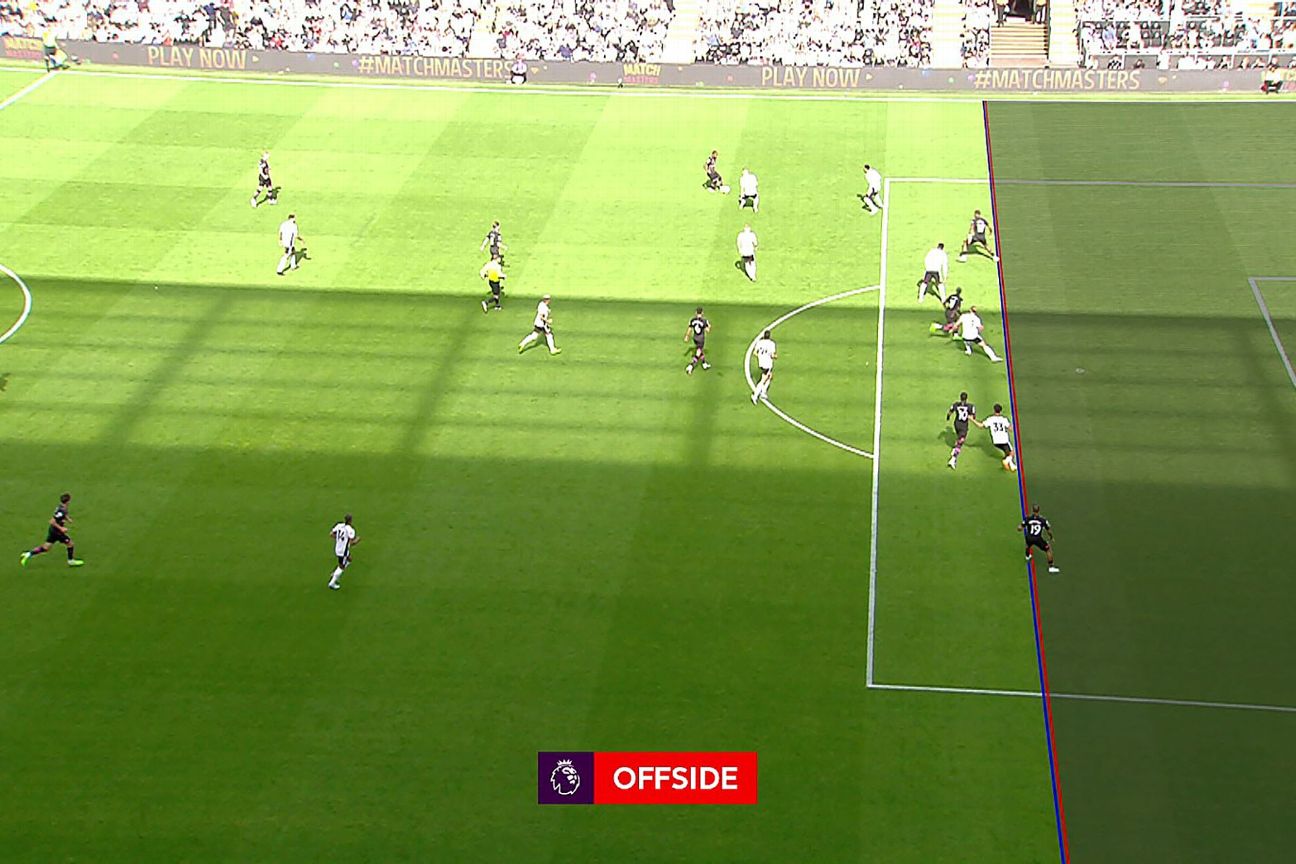
And while there have been a lot of comments after Jeff Schlupp had a goal disallowed for offside in the build-up against Odsonne Edouard, in terms of VAR offside calls, this wasn’t actually close, with a very clear gap between the lines.
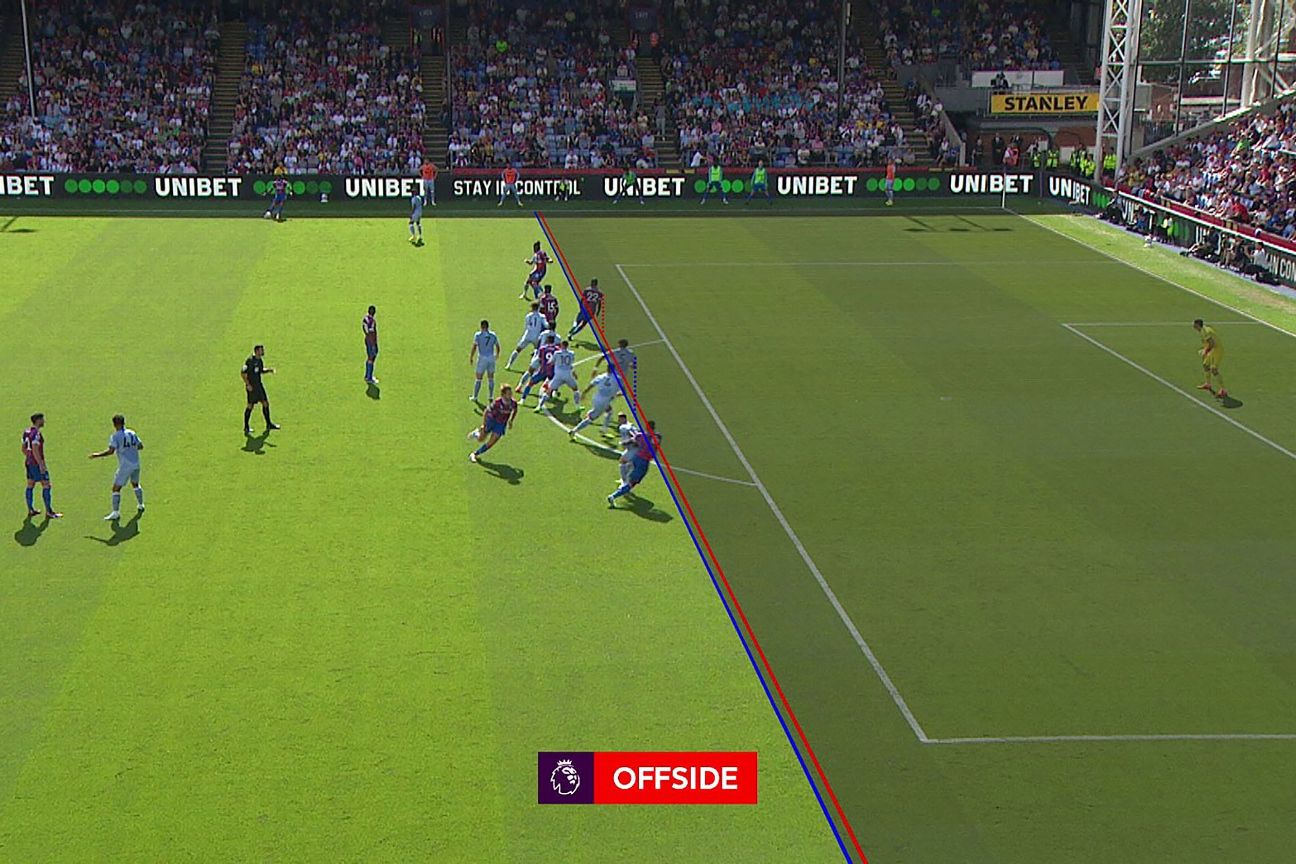
Arsenal had another offside situation on Martin Odegaard’s second goal at Bournemouth, but Ben White was shown to be onside. This didn’t need the tolerance level to be ruled onside, with the attacking and defending lines making it clear.
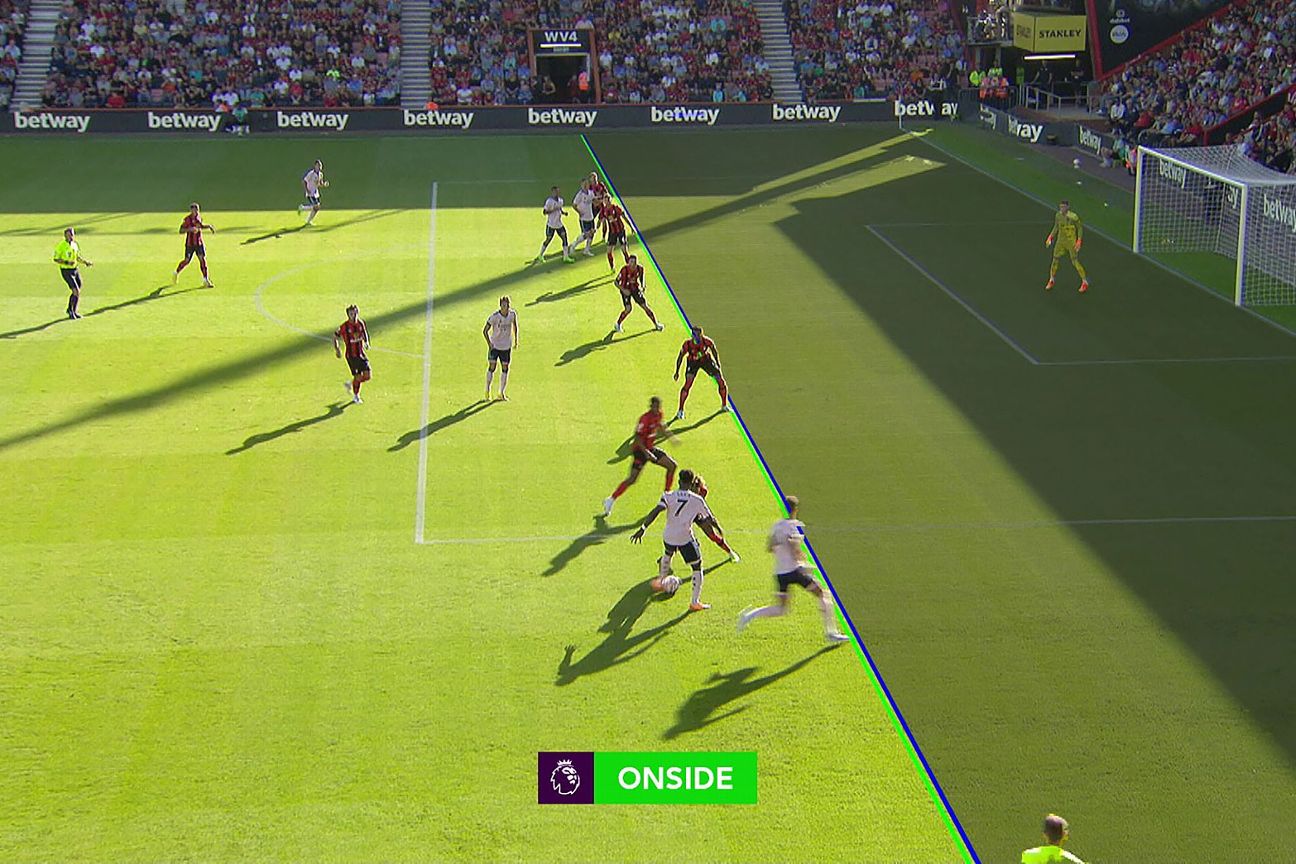
So where do we go from here? Semi-automated offside technology will remove the whole process of the VAR deciding the moment the ball has been played, plotting players and drawing the lines. It will be near instant and use bespoke cameras rather than relying on the regular TV broadcast frames. The VAR will only have to validate that it’s a correct offside situation (ball is played by an attacking player, or by a player in an active offside position).
play
1:58
An explainer of how FIFA’s semi-automated technology will help with VAR offside decisions at the World Cup.
What’s an even better improvement is a 3D visualisation of an offside situation, like goal-line technology or line calls in tennis, which take the fan directly in line with the players as though they are the assistant referee. The idea is that it will remove the lack of trust in the process among some fans.
The Premier League, and all major leagues, are watching on with interest in the hope the new system proves a success. We could see it adopted for the 2023-24 season and will no longer have to use the current manual offside system that supporters dislike so much.
Information provided by the Premier League and PGMOL was used in this story.